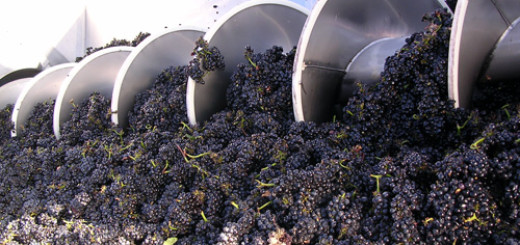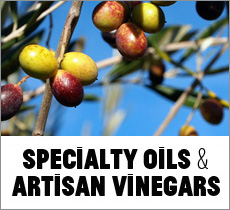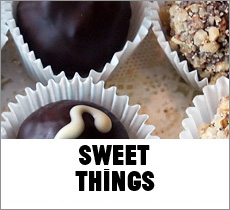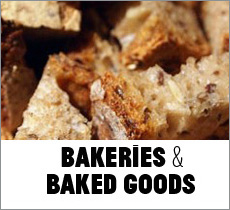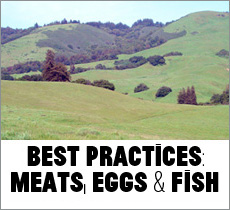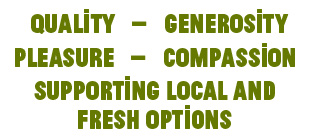Shedding Light on Solar Cooking
Remember the lyrics “Just give me the warm power of the sun” from John Hall’s environmental anthem Power promoting sustainable energy? How to harness the power of the sun—a massive power plant—and convert it to usable energy is the holy grail of renewable energy technologies. Sometimes the simplest method can be the most effective. Enter solar ovens: a low-tech concept of concentrating the sun’s energy onto food turns out to be a cooking method that produces simply delicious food.
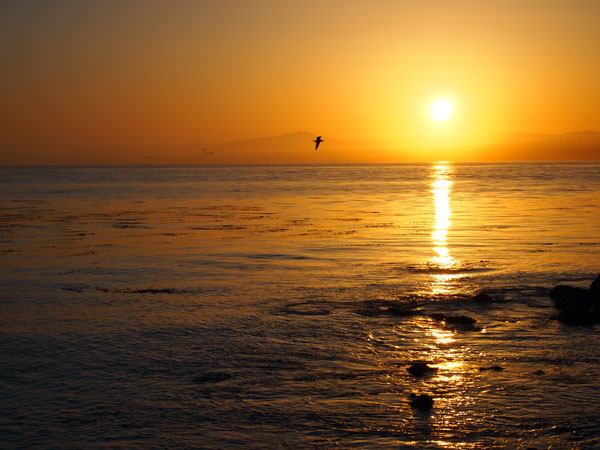
Sunrise from the Monterey Bay Aquarium
Just ask Rosemary Wilvert, a member of the SLO Solar Cookers. Rosemary has been cooking with the sun for about 20 years. Just about anything that goes in a conventional indoor oven can be cooked in a solar oven, she says. “I use the same old recipes. I just leave it in a little longer.” Cakes, cobblers, breads, brown rice, stews, and even custards (which doesn’t need a water bath in a solar oven) cook perfectly. Nothing burns or overcooks. In fact, the flavors intensify in the slow heat of the sun. Nutritional value is retained as well as most foods cook in their own juices without added water.
Solar Cooking Improves Lives and Landscapes
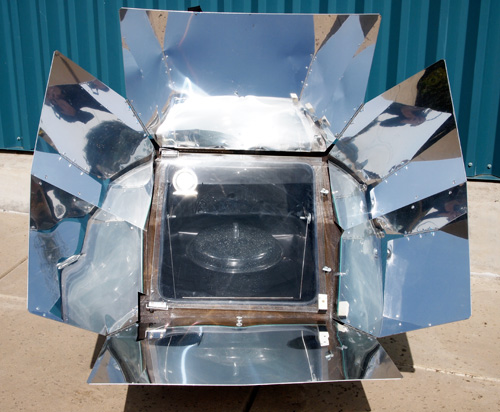
cooking beans and rice
For those of us in the United States and other developed countries, using a solar oven is a choice we make, a small but significant contribution to decreasing our dependence on oil and gas. But for those living in areas of the world where turning on a burner or heating up an oven at the turn of a knob is not an option, a solar oven can be a life-changing and in some cases a life-saving innovation. In developing countries, wood is the most common source of fuel and it can take 6 to 7 hours per day to collect enough wood for cooking and heating water. This task usually falls to women and children and, in areas where governments are unstable, they are particularly vulnerable to attack and kidnapping when going out into the bush to gather wood. Even if they manage to stay safe, the act of gathering itself is detrimental to the family. For the women, this is time they could spend at home caring for young children, tending animals and a garden, or producing a product for a small business. For the children, this is time they could be learning, helping, and engaging in play with other children. Wood gathering also contributes to deforestation, which degrades the landscape, leading to soil erosion, increased flooding, and endangerment of local species.
The health benefits of solar cookers are even more immediate when considering the improved air quality that comes with not burning wood and other fuel sources such as charcoal, kerosene, dung, and used tires. Smoke inhalation is particularly a problem where cooking is done inside houses. And without a fire inside the home, the risk of kitchen fires and burns is minimized.
Phyllis Davies, another member of the SLO Solar Cookers team, can vouch first hand for the health and environmental benefits of solar cooking. For about 20 years, she traveled extensively in Asia, Africa, South and Central Americas, and most recently to Cuba teaching gardening and solar oven cookery. Phyllis and the team of SLO Solar Cookers are eager to share their enthusiasm for the solar ovens close to home as well. They have given classes and demonstrations to the local community and will hold classes in the spring and throughout the summer of this year (2013).
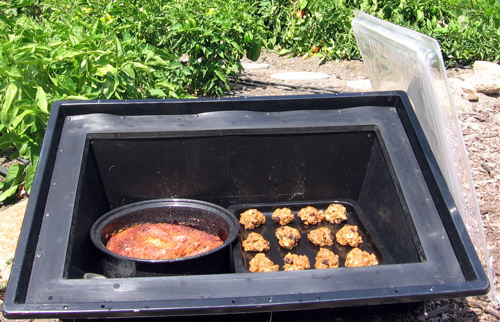
a SOS Sport Cooker with a cobbler and some cookies
At Phyllis’ house in San Luis Obispo, the gas oven is hardly ever used. It’s her solar cooker that turns out perfectly roasted pork and chickens. She says marinated meats like sauerbraten come out really well. Fruit pies and pizza don’t work too well because the temperature in the solar oven doesn’t get high enough for these but just about anything else can be cooked with the sun. She likes cooking at the lower temperatures; it creates more flavor, she says, as the “flavors have time to burst” into their foods. The only trouble Phyllis encounters is not being absolutely sure of the finished cooking time because intermittent cloud cover will slow the cooking.
Basic Requirements for Solar Cooking

good eggs
Clouds and inclement weather do limit the use of solar ovens. In order to make sure a solar oven is up to temperature, a minimum of 15 to 20 minutes of sunshine is needed per hour. Food begins cooking at about 180 degrees: most solar ovens get up to the equivalent of a “slow oven” which is about 225 to 250°. If it isn’t sunny enough, reflectors can be attached to the ovens to accentuate the sun’s energy, but if the oven temperature remains below 140°, food should be brought in as it would not be safe to eat.
With the environmental, health, and social advantages of solar cooking, it is no wonder that interest in the use of solar ovens is heating up. This June in Fresno, California, the Central Valley Solar Cookers will put on a three day solar cooking festival, with cooking demonstrations, tastings, vendors, music and lots of sunshine. On the California Central Coast, the SLO Solar Cookers will hold classes and demonstrations this spring and summer. Now in chilly, cloudy and hopefully rainy winter, we look ahead to clear skies and using the “warm power of the sun” for some slow cooked goodness.

sunrise from Pigeon Point Lighthouse, Pescadero
Margaret Lange is a poet, writer, and singer/songwriter who is at the tail end of completing her first CD. She founded the Sky World Poetry Series, hosted “The Spoken Word” on Excellent Radio, and taught poetry in the schools with California Poets in the Schools. She lives in a rural town on the Central Coast of California where she can often be found in her kitchen fiddling with food.
Sport Cooker photo: Rosemary Wilvert


